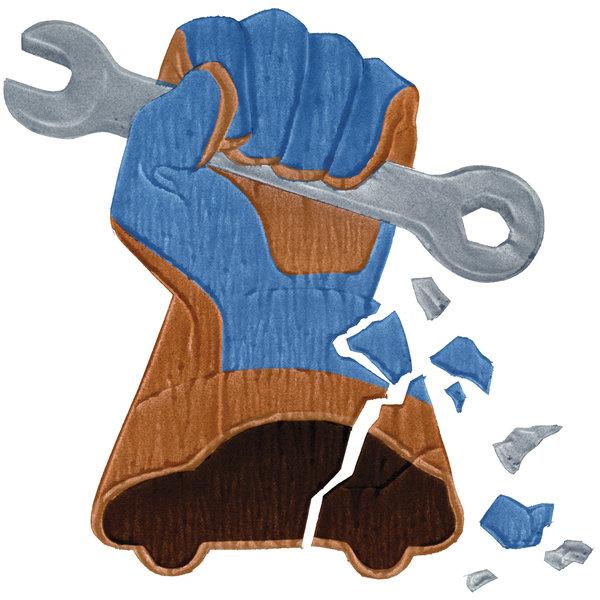Image art by Alex Nabaum
Article originally from the New York TImes 8/12/17
From the The New York TImes Editorial Board
Workers at a Nissan plant in Canton, Miss., picked a bird in the hand when they recently voted against forming a union, and that’s understandable. Veteran workers, who generally opposed the union, make $26 an hour. That is less than the nearly $30 an hour for similar autoworkers in unions at the major American carmakers — but almost twice the median hourly wage in Mississippi.
This, in a nutshell, is what has made it so difficult to organize workers in the South. With employers and anti-union politicians telling them that unionization would threaten their jobs, Southern workers choose to stick with what they have rather than risk sharing the fate of their poorly paid neighbors. And while the threat does not square with reality, since major car plants worldwide are typically unionized, a majority of workers are not willing to call this bluff and organize for better wages and conditions.
This dynamic stubbornly depresses wages in the South, and throughout the country. Even within Nissan in Canton, pay is trending down: While workers hired in the plant’s early years make about $26 an hour, workers hired more recently top out at $24 (and often make less). In addition, Nissan has hired thousands of contract workers who are paid less than employees.
Nonunion pay scales in the South can hold down wage gains for unionized car plants in the North because managers can hold them up as a benchmark in negotiations.
This meager pay leads to unhealthy imbalances of federal taxes and spending, with Washington sending far more to several Southern states than their citizens pay in taxes.
Raising wages in the South is essential for the nation’s prosperity. To do so, unions could align more explicitly with foreign carmakers’ strong unions in Japan and Germany to pressure the companies for the same recognition and rights for American workers as for their own. Southern politicians could refrain from union bashing during organizing drives, as occurred during an effort to organize Volkswagen in Tennessee in 2014. A higher federal minimum wage could be phased in over a longer time to get to $15.
But most of all, the Southern notion that low wages are a sustainable competitive advantage has to end. What’s needed is a strategy to raise low wages, for everyone.

